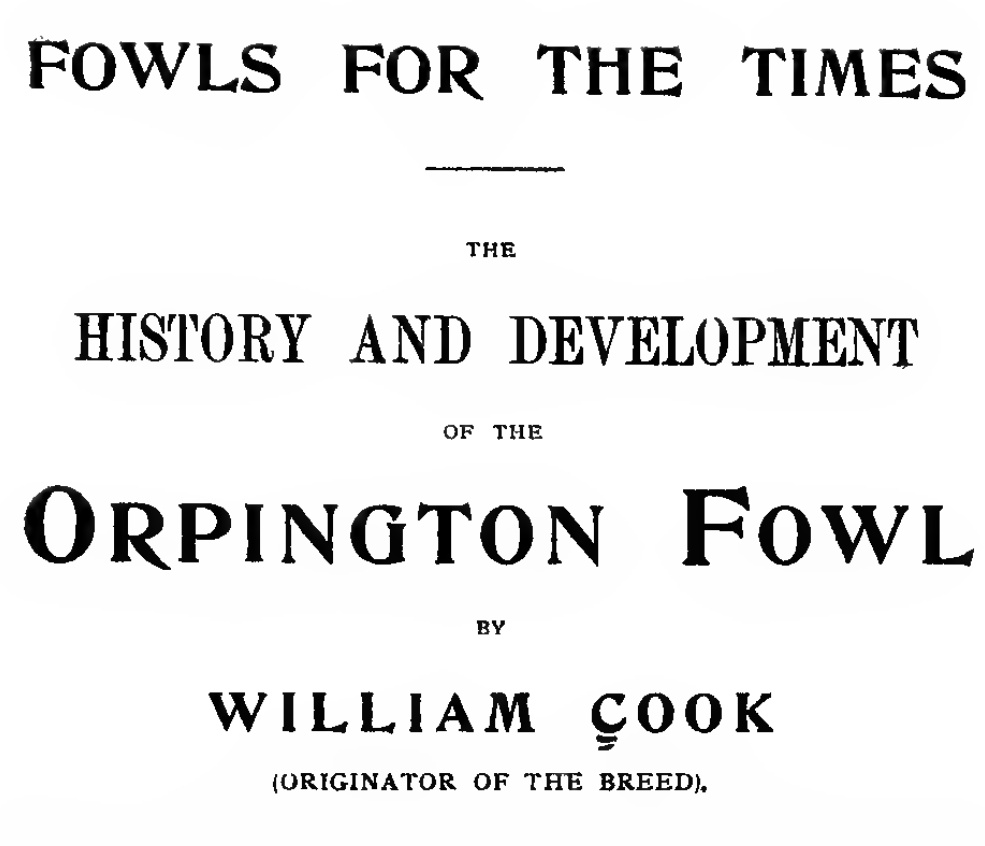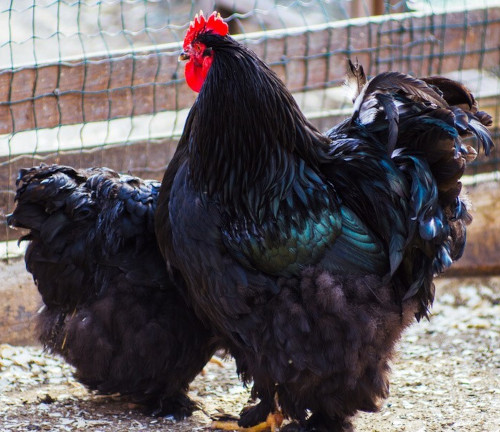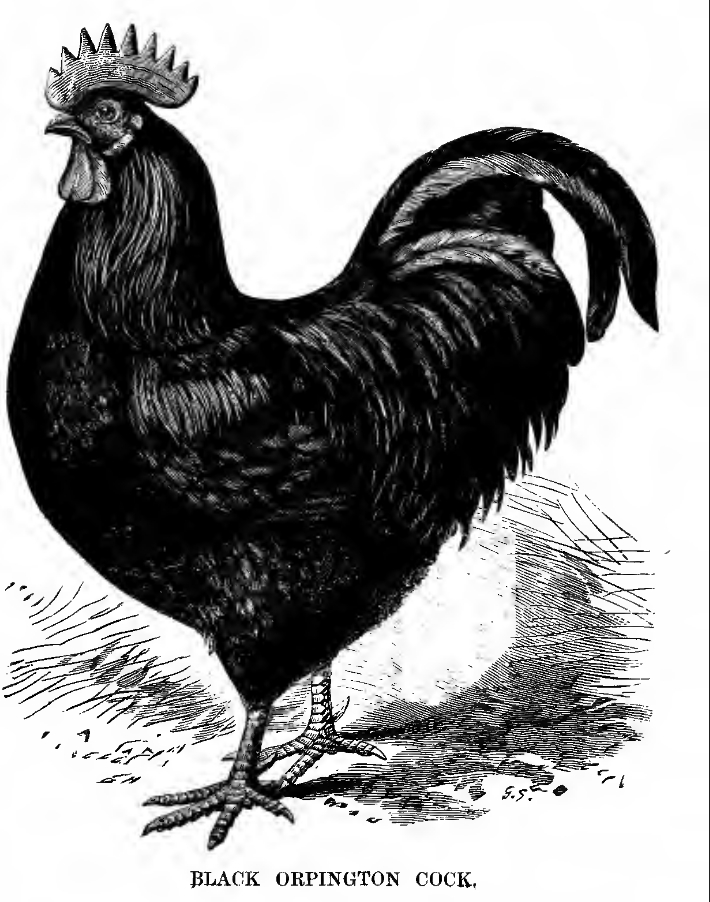The history, origin and development of the Orpington chicken.

The first Orpington was the black, bred by William Cook in 1886 by crossing Minorcas, Langshans and Plymouth Rocks to create a handsome new fowl that was a good winter layer.
Below: The jubilee Orpington was named to celebrate the diamond jubilee of Queen Victoria in 1897.

Orpington chicken origin:
William Cook envisaged a dual purpose bird that had a good table weight and can lay at least 180 eggs a year.
The Orpington chicken timeline:
- In 1880 Mr. cook started breeding large quality dual purpose fowl that were good winter layers.
- In 1886 black Orpingtons made their first appearance at poultry shows.
- The Orpinton club was founded in 1887.
- The rose comb variety appeared in 1888.
- Orpington chickens made their way to the USA in 1890.
- The first white Orpingtons appeared in 1892.
- The buff Orpington made it's first appearance in 1894.
- The Jubilee Orpington was named for the diamond Jubilee of Queen victoria in 1897.
- The first Orpington bantam appeared in 1900.
- The spangled was introduced in 1902.
- The Jubilee Orpington club was formed in 1908.
- The cuckoo Orpington debuted in 1908 when 17 birds were shown.
- The red was first shown in 1911 at crystal palace.
- The black bantam was first bred in 1929 but not exhibited until 1936.
- The white bantam came in 1946.
- The Orpington bantam club was founded in 1950.
- The standards were accepted by the poultry club in 1952.
- The Blue Orpington bantam was first shown in Bradford in 1953.
- The Large fowl and bantam clubs amalgamated in 1975.
The history of the Orpington chicken:
In 1890 William cook contributed several articles to the English poultry press, In which he purports to give the true origin of the Black Orpington. In these articles he sets himself up as the pioneer of this new breed and makes the claim of the Orpington having the finest flesh and skin in existence.
The original Orpington, the Black, was developed in England at the town of Orpington in County Kent in 1886 by William Cook.
Below: The first black Orpingtons.

Orpington chickens went to the US in 1890 and gained popularity very rapidly, based on their excellence as a meat bird. As the commercial broiler and roaster market developed, the Orpington lost out partly because of its white skin.
The general belief is that William Cook originated not only the Black Orpington, but also the Whites, Buffs, Jubilee and Spangled varieties.
There are, however, English authorities on poultry who dispute Mr. Cook's claim as the originator of the Buff and White varieties, but accord him the sole credit of producing the Blacks, Jubilee and Spangles.
The late Lewis Wright in his "Book of Poultry" relates the history of the first appearance of Buff Orpington in England as follows:
Below: The first drawing of the straight comb Orpington.

The first pair of Buff Orpington ever shown as such were exhibited by Mr. W. Cook, at the Dairy Show, October, 1894.
The Buff Orpington was developed around 1890 from the following crosses :
Generation 1 : Gold Spangled Hamburg x Buff Cochin = chick A
Generation 2 : chick A x Dark Dorking = chick B
Generation 3 : Chick B x Buff Cochin = Buff orpington.
The trouble with Mr. Cooks explanation is there had been in existence for a long time a chicken that was known as Lincolnshire Buffs.
Mr. E. Brown says as follows: "Birds of a similar type have been personally known to us for more than twenty year, especially in the Spalding, Boston and Louth districts, under the name of Lincolnshire Buff.
The Orpington was first exhibited in America in 1890.
Single Comb Black Orpington were first exhibited at the show of the Massachusetts Poultry Association, held in Boston in 1890.
Single Comb Buff Orpington were first exhibited at the Madison Square Garden Show, New York, in 1899, twelve single entries and one pen being the total
William Cooks birds were good dual purpose birds bred to be able to lay 160 eggs a year. His males weighed between 7 - 10 lbs.. The colour should be rich, soft mellow shade of golden buff free from red with white legs.
The Blue Orpington was developed by Mr Cook before the First World War which was a limiting factor preventing them becoming very popular.
